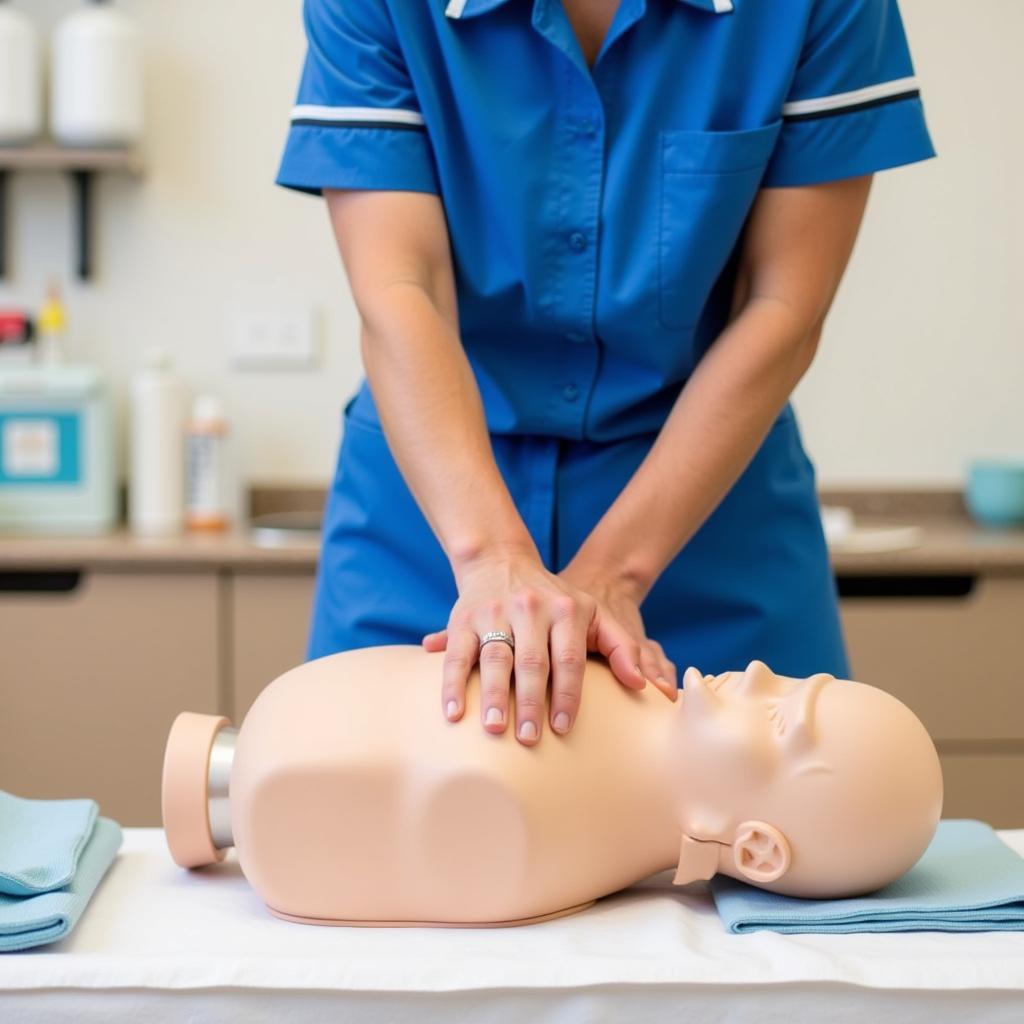The hospital chain of survival refers to a series of actions taken by healthcare providers to treat life-threatening emergencies like cardiac arrest, stroke, and heart attack. Understanding the correct order of steps in this chain is crucial for maximizing the patient’s chances of survival and minimizing the risk of long-term complications.
Early Recognition and Activation of the Emergency Response System
The first link in the chain involves recognizing the signs and symptoms of a medical emergency. This includes identifying symptoms like chest pain, difficulty breathing, loss of consciousness, or sudden numbness or weakness.
What should you do if you witness a medical emergency?
Immediately activate the emergency response system by calling the designated emergency number for your location. Provide clear and concise information about the situation, including the patient’s location, age, and symptoms.
High-Quality CPR
 High-Quality CPR Demonstration
High-Quality CPR Demonstration
Cardiopulmonary resuscitation (CPR) is a lifesaving technique used when a person’s heart has stopped beating. High-quality CPR involves chest compressions and rescue breaths, which help circulate oxygenated blood to the brain and other vital organs.
Why is high-quality CPR important?
Effective CPR can buy time until trained medical professionals arrive, increasing the chances of survival.
Rapid Defibrillation
 Defibrillator Use in a Hospital Setting
Defibrillator Use in a Hospital Setting
Defibrillation is a procedure that delivers an electrical shock to the heart to restore a normal rhythm. It is most effective when administered within the first few minutes of a cardiac arrest.
How does defibrillation work?
The electrical shock from a defibrillator can interrupt chaotic electrical activity in the heart, allowing it to regain a normal rhythm.
Effective Advanced Life Support
 Advanced Life Support Team in Action
Advanced Life Support Team in Action
Advanced life support involves a range of interventions performed by trained healthcare professionals. This includes administering medications, managing the airway, and providing other advanced cardiac life support measures.
What is the purpose of advanced life support?
Advanced life support aims to stabilize the patient’s condition, address underlying causes of the emergency, and optimize their chances of recovery.
Integrated Post-Cardiac Arrest Care
Post-cardiac arrest care involves comprehensive management after the initial emergency. This includes optimizing ventilation and oxygenation, controlling body temperature, and providing other supportive therapies.
Why is post-cardiac arrest care crucial?
Post-cardiac arrest care is essential for addressing potential complications, improving neurological outcomes, and supporting the patient’s recovery.
Conclusion
The hospital chain of survival is a critical framework for responding to medical emergencies. By understanding the correct order of steps and the importance of each link in the chain, healthcare providers can work together to improve patient outcomes and save lives. If you’d like to learn more about emergency preparedness, you can visit our other helpful resources on the website.
For immediate assistance, please contact our 24/7 care team:
Phone Number: 02437655121
Email: [email protected]
Address: Số 298 Đ. Cầu Diễn, Minh Khai, Bắc Từ Liêm, Hà Nội, Việt Nam.